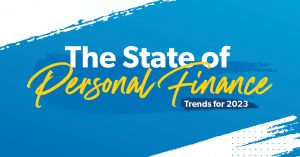Our writers and editors used an in-house natural language generation platform to assist with portions of this article, allowing them to focus on adding information that is uniquely helpful. The article was reviewed, fact-checked and edited by our editorial staff prior to publication.
Key takeaways
- The biggest difference: A fixed-rate mortgage carries the same interest rate for the life of the loan, while adjustable-rate mortgage’s interest changes at set intervals (after a fixed-rate intro period).
- Other distinctions: ARMs’ initial interest rate is lower, but they often demand bigger down payments and bigger income from borrowers than fixed-rate mortgages.
- Fixed-rate mortgages offer stability and predictability in monthly payments, making them a better choice for long-term homeowners.
- ARMs may be a better option for those planning to move before the introductory period ends or for those expecting a significant increase in income by then.
If you’re looking to buy a house right now, you might be weighing a fixed-rate versus adjustable-rate mortgage (ARM). While traditional fixed-rate mortgages remain the go-to for most homebuyers, ARMs are increasing in popularity — due mainly to a rapid rise in interest rates in recent years. They tend to charge less interest — at least in the beginning — than their fixed-rate cousins, and of course, have the potential to drop further.
Still, these loans aren’t right for everyone. Here’s everything you need to know about the difference between fixed- and adjustable-rate mortgages.
10.1%
Percent of mortgage applications that were for ARMs in August 2024
Source:
Mortgage Bankers Association
Understanding fixed-rate vs. adjustable-rate mortgages
How fixed-rate mortgages work
A fixed-rate mortgage has the same interest rate for the life of the loan, so your monthly loan principal and interest payment won’t change unless you refinance. Fixed-rate mortgages typically come in 30-year and 15-year terms, but there are also flexible term options anywhere from eight years to 29 years.
Keep in mind: Your monthly payments can still fluctuate a bit even if you have a fixed interest rate mortgage. That’s because your property taxes and homeowners insurance premiums, which typically are bundled into your payments, change over time. The portion of your payment that’s loan principal and interest, however, stays the same.
How adjustable-rate mortgages (ARMs) work
An adjustable-rate mortgage has an interest rate that changes at set intervals after a fixed-rate introductory period. Intro periods are most commonly three, five, seven or 10 years. Generally, this initial fixed interest rate is lower than that of a standard fixed-rate mortgage. Once that introductory term ends, your rate will adjust up or down at predetermined times, usually every six months or every year. These adjustments are often tied to a stock market or financial index, such as the Secured Overnight Financing Rate (SOFR).
Keep in mind: While introductory rates on ARMs tend to be lower than those of fixed-rate mortgages, they generally fall into line with prevailing interest rates once the intro period ends. Depending on market conditions, this could mean a substantially higher interest rate. Most ARMs have rate caps that can protect you from too much whiplash, but odds are your monthly payments will increase.
Differences between fixed-rate vs. adjustable-rate mortgages
The biggest difference between a fixed-rate mortgage and an ARM is the variability of the interest rate. With a fixed-rate mortgage, the amount you pay towards interest each month stays constant for the loan’s entire lifetime. With an ARM, the rate changes after the introductory period ends, and will continue to adjust throughout the rest of the loan term. Your payments will alter accordingly, rising or falling with each reset.
Beyond the predictability of the interest payments, the other key differences between the mortgages include:
- Initial interest rate: An ARM typically has a lower initial interest rate and monthly payment than a fixed-rate loan.
- Down payment minimum: A conventional ARM requires a higher down payment of 5 percent, compared to 3 percent on some conventional fixed-rate loans.
- How interest is calculated: With fixed-rate mortgages, your rate’s calculated (based on your financials) and set at the onset of the loan. With ARMs, your rate’s fluctuations are based on the moves of its benchmark index. When the loan’s slated to adjust, your new rate will be this index rate, plus an extra percentage, or “margin,” added by the lender. The margin percentage usually stays constant: 2 percentage points above SOFR, for example. Overall, there will be caps to ensure your rate can’t adjust above a set amount, nor fall below a set percentage.
ARM vs. fixed-rate mortgage payments example
While the initial payment of an ARM might look more attractive than a fixed-rate payment, it’s important to know the maximum amount you could wind up paying, too. In this example, we illustrate the potential for a worst-case scenario, assuming a first adjustment cap of 5 percent, a subsequent adjustment cap of 1 percent and a lifetime cap of 5 percent:
| 5/1 ARM (30 years) | 30-year fixed-rate mortgage | |
|---|---|---|
| Home price | $390,000 | $390,000 |
| Loan amount | $370,500 (5% down) | $378,300 (3% down) |
| Initial interest rate | 6.08% | 7.10% |
| Initial mortgage payment | $2,299 | $2,542 |
| Maximum interest rate | 11.08% | 7.10% |
| Maximum mortgage payment | $3,550 | $2,542 |
Note that the max interest rate above wouldn’t appear overnight. Lenders typically cap rate adjustments at 1 or 2 percentage points per period. And there’s no rule that it’ll go up, either: It all depends on the market. You could wind up lucky and see the rate fall, too.
Bankrate’s ARM vs. fixed-rate calculator can help you compare the math on a fixed-rate loan vs. an ARM.
Similarities between fixed-rate vs. adjustable-rate mortgages
Fixed-rate mortgages and adjustable-rate mortgages aren’t entirely different animals. These two types of loans have some components in common:
- Both come with standard 30-year repayment options: Both conventional fixed-rate and adjustable-rate mortgages offer standard 30-year terms.
- Both require good credit to qualify: With either a fixed-rate mortgage or an ARM, a lender assume a certain level of risk to loan you the money. With that in mind, you’ll need good to excellent credit to get approved and with the most favorable terms.
- Both can be refinanced: Whether you have a fixed-rate or an adjustable-rate mortgage, you’ll have the option to refinance down the line. (With an ARM, this is the key to getting out of the loan before the first rate reset, if that’s your plan.)
Choosing between a fixed-rate or adjustable-rate mortgage
There’s no right or wrong answer about a fixed-rate and adjustable-rate mortgage — both have pros and cons. Still, one type of loan might be a better fit than the other for your financial circumstances.
Fixed-rate mortgages might be best for:
- Borrowers planning to stay put: If you plan to make your next move permanent, the stability of a fixed-rate mortgage might be the best option. You won’t ever need to worry about increases to your monthly principal and interest payment, and you’ll have the option to refinance in the future if rates come down.
- First-time homebuyers: Buying a house is a complicated process, and the extra considerations and nuances of an ARM can make it even more daunting. Plus, most dedicated first-time homebuyer loan programs only come with the fixed-rate option.
- Borrowers with a “set it and forget it” nature: If you’re not a keen market watcher, then a fixed-rate mortgage guarantees your monthly obligation remains the same for the duration of the loan. This reliability is a boon in budget planning. You’ll be able to ballpark your monthly costs without paying mind to interest rate variations.
- Those buying in a low-rate environment: If “borrowing is cheap” — that is, interest rates are low or trending downward — why not lock it in with a fixed rate?
- Those who are cash-crunched: Fixed-rate loans typically require slightly lower down payments than comparable ARMs. If you’re tight on cash upfront, a fixed-rate loan may be more manageable on the front end.
Adjustable-rate mortgages might be best for:
- Anyone who isn’t buying their forever home: If you plan to move in a few years, you could save money with the low intro payments — and get out before the rate resets.
- Borrowers who need jumbo loans: Generally, bigger loans come with higher interest rates. The low intro rate of an ARM could grant you significant savings at the start of a loan.
- Borrowers with foreseeable lifestyle changes: If you can count on a major rise in your earnings over time (after finishing grad school, for instance) or you’re anticipating a financial windfall, you can more easily handle any rate increases and payment hikes.
- Buying when interest rates are high/volatile: An ARM may be a more enticing option in unpredictable market conditions, especially if the short-term trend seems to be pointing upwards. By the time the ARM resets, the trend may have reversed and interest rates may be on the downswing. If they have, you’ll reap the benefit — or you can refinance to a fixed-rate loan.
FAQ about ARMs vs. fixed-rate mortgages
-
Yes. An ARM comes with a greater risk of a higher monthly payment if interest rates increase over the long-term. That risk, however, comes with the upfront incentive of a lower monthly payment for the immediate future, which lasts several years.
-
ARMs may be more difficult to qualify for, since they usually require a minimum 5 percent down payment,; some fixed-rate mortgages only require 3 percent down. Also, most lenders will assess your ability to make higher payments based on the potential ARM adjustments, not just the initial lower payment. Both loans come with similar credit score requirements, though.
-
Choosing an adjustable-rate mortgage over a fixed-rate mortgage could be beneficial for several reasons. ARMs initially offer rates lower than those of fixed-rate loans, so buyers can dedicate more of their budget to the home’s purchase price. The opportunity for reduced initial payments and interest rates is particularly enticing, especially when overall interest rates are high (but projected to drop). When interest rates decrease, the adjustable rate will fall in tandem, offering further financial advantages.
Read the full article here












